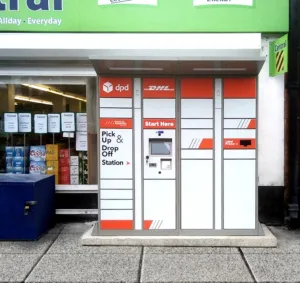By Richard Williams, Commercial Director, AMA
Retail marketers battle it out in one of the most competitive and crowded advertising sectors. And with budgets tightening, it’s never been more important for retailers to re-evaluate their media mix and find new ways to make their budgets work harder. In fact, in a recent WARC study, 96% of retail and CPG marketers claimed they were evolving their approach to advertising, and deploying a wider range of media channels was their number one priority.
Interestingly, however, in a landscape of almost constant change with new opportunities springing up all the time, one of the most established ad formats has had a dramatic overhaul, making waves across the digital advertising industry: audio.
Ad spending in digital audio advertising is projected to reach $248.6 million this year. Indeed, the growth of digital audio formats – from music playlists, to podcasts, to digital radio shows – means that connecting with listeners at scale has never been easier. But perhaps more importantly, with the rise of these new formats, audio is emerging as a uniquely positioned full-funnel channel. The recent WARC study supports this sentiment revealing marketers believe digital audio has a role to play across the path-to-purchase. It’s no wonder that in the past few years we have seen huge investments in the channel from big brands including McDonald’s, Tesco and Starbucks, who are taking advantage of new programmatic capabilities and reaping the rewards. Now is the time for others to follow suit.
The missed opportunity for retailers
Retailers have invested millions into their visual design over the years. However, sonic branding – the expression of your brand through sound – is a relatively new concept that whilst some have grasped, others haven’t. That said, brands have always been aware of their audio brand in other ways, either through jingles or assets like McDonalds’ “I’m lovin it” that has been stripped of its words but retains the distinctive tune. In fact, Ipsos’ 2020 Power of You report claimed that audio is still a ‘missed opportunity’, as it revealed sonic cues are eight times more likely to draw attention to a brand than other assets such as visuals, which continue to dominate as a medium.
To further emphasise the opportunity, it’s worth noting these stats. Among consumers aged 16-64, digital audio platforms now command 20% of all time spent with media, a figure that rises to 25% among younger audiences. Spotify now boasts 456 million listeners, 74% of UK adults listen to digital radio every week, and 40% of 26-35 year olds tune into podcasts. Meanwhile a Guardian study found that podcast advertising offers the highest levels of attention, of any format, far above TV.
So, what’s the takeout? Audio provides a huge opportunity for much deeper engagement with brands. And coupled with technological advancements alongside the growth in omnichannel addressability, there is a new found confidence in the channel.
Enter programmatic and dynamic ads
Audio inventory can now be bought programmatically and be served across channels such as Amazon Music, Spotify, podcasts and digital radio stations. Utilising programmatic and dynamic ad insertion allows brands to reach much bigger audiences, all in one go, making it an attractive option for big players such as Tesco, John Lewis and Boots.
A further major benefit is that retailers can use dynamic creative to serve thousands of iterations of an audio ad and deliver a personalised message to each listener. This is good news considering the WARC study also revealed that 48% of marketers are wanting to include more personalised messaging and relevance in their audio advertising.
Retail brands can combine any source of contextual and audience-level data to dynamically serve the most relevant and actionable ad to each listener. This can determine every aspect of an ad, such as the voice over, music and sound effects. This granular level of control makes the ad feel like it is made for each listener, helping the company to increase cut-through and drive response.
The proof is in the pudding
Within the space of an hour, sportswear brand Under Armour was able to voice lines for 120 locations, four weather types, six product features, six time and day call outs and a few additional lines on rotation all highlighting different product use cases.
Elsewhere, US retailer, Target, designed their creative to promote new offers every week across a range of product categories that are available at the listener’s local store. The core of the creative remains the same throughout and the retailer simply re-records new offer lines as and when it is needed. And these offers align with the ones being promoted in its mailer campaigns to ensure everything is joined up. Meanwhile, Specsavers demonstrated another increasingly popular element that digital audio ads offer, accessing API data that drew in the local appointments for local stores to make ads hyper-localised.
In an increasingly crowded marketplace, connecting with customers on a deeper level has become more important than ever before and digital audio ads offer new opportunities for retailers to make these connections. With dynamic creative, this can be further enhanced by being able to flexibly plan, buy and execute content across long periods without compromising on effectiveness. A win-win for all.
*AMA is a client of Bluestripe Communications, owned by Bluestripe Group, publisher of ECA







